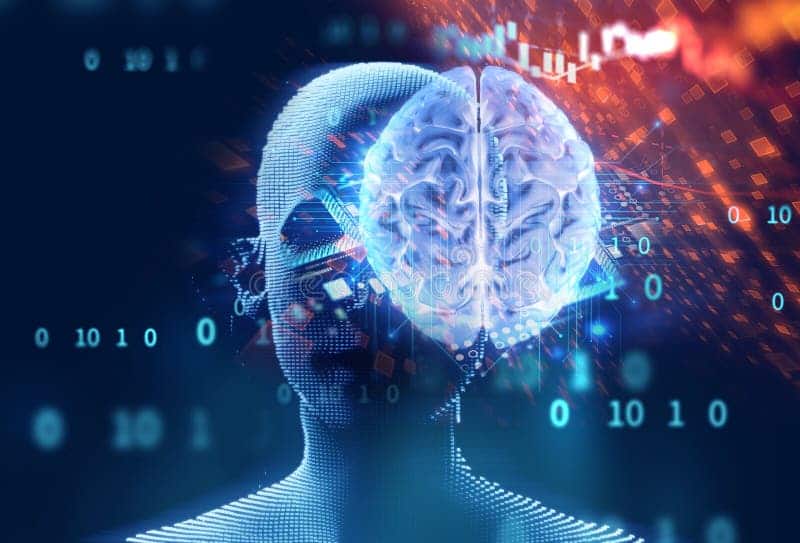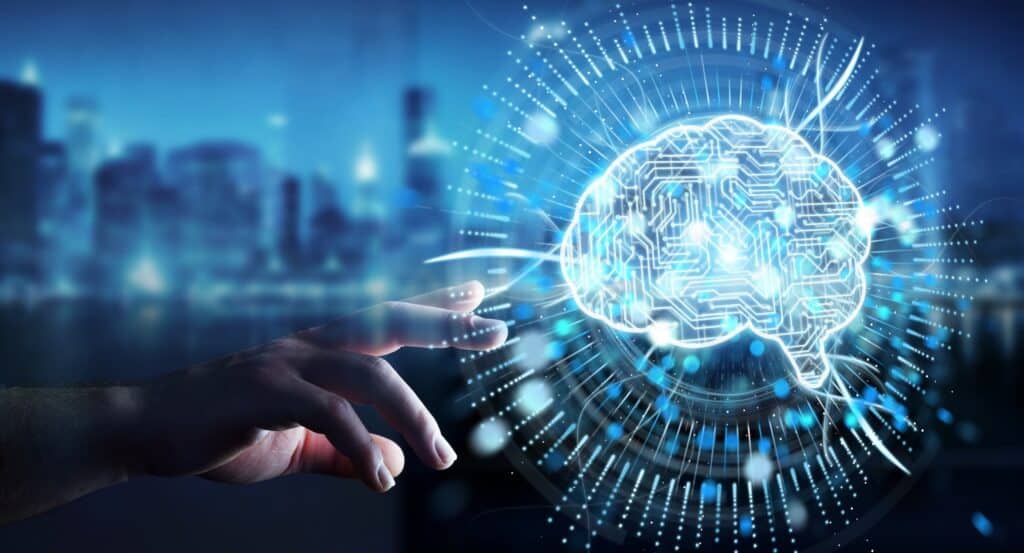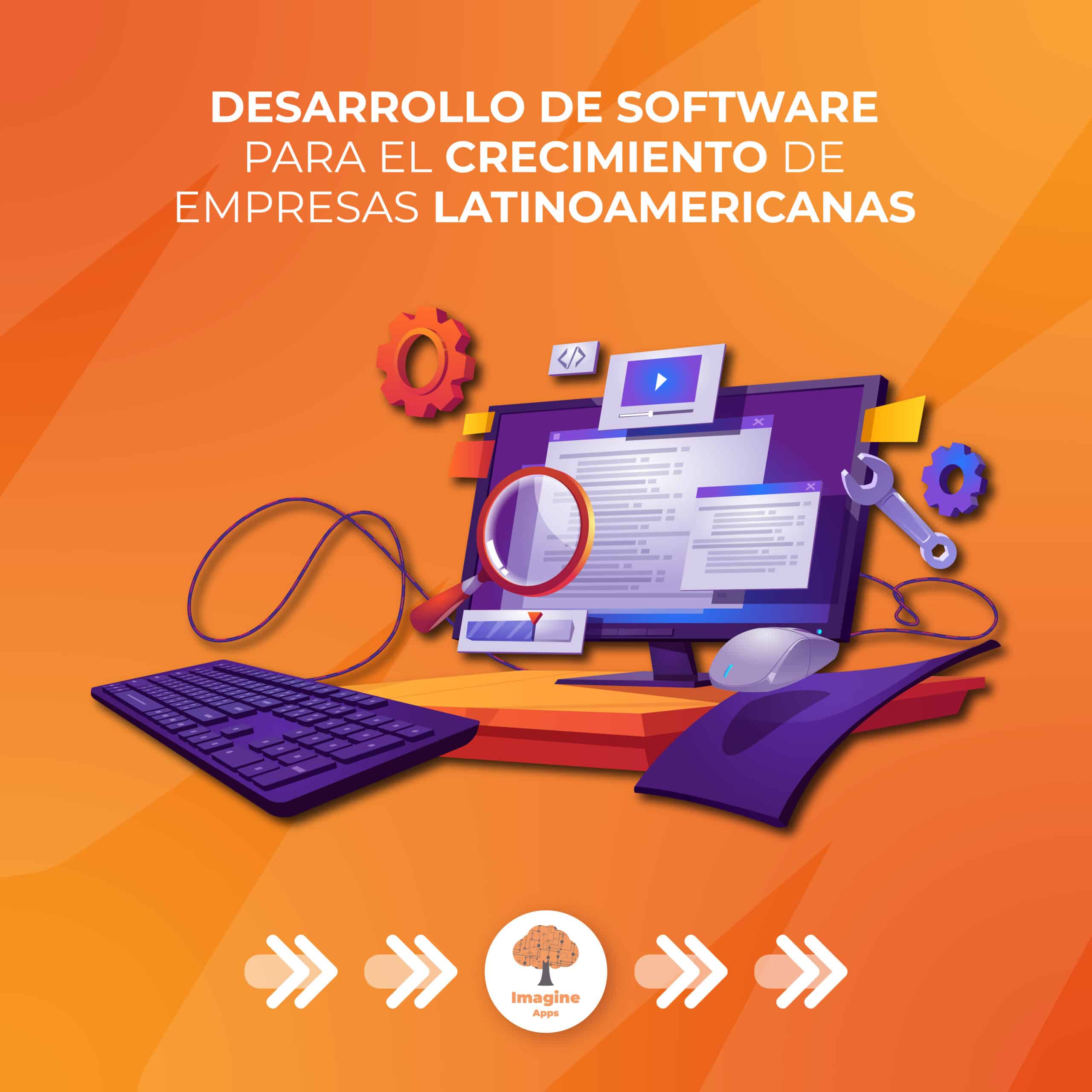Artificial Intelligence (AI) has experienced impressive advances in recent years, and one of the most fascinating fields is Generative AI. This concept, once relegated to research labs and elite projects, has undergone an exciting democratization in recent times. In this article, we will explore Democratized Generative AI, its impact on society and how it is shaping the digital future.
In a world driven by technological innovation, Generative AI emerges as a beacon of creativity and accessibility. What once seemed reserved for specialized labs and cutting-edge projects is now excitingly unfolding in the public sphere. In this article, we will dive into the waters of Democratized Generative Artificial Intelligence, exploring its influence on society and tracing the lines that will outline the horizon of our digital future.
The constant evolution of Artificial Intelligence (AI) redefines the intersection between technology and society. In particular, AI applied to healthcare has emerged as a transformative field, showing extraordinary potential to improve diagnostic accuracy, personalize treatments, and optimize operational efficiency in the healthcare sector. In this analysis, we will explore how AI in healthcare is paving the way for more effective, patient-centered care, marking a crucial milestone in the convergence of technology and healthcare.
Demystifying Generative AI
Before diving into the democratization of generative AI, it is essential to understand what this term actually means. In simple terms, generative AI is a subfield of artificial intelligence that focuses on creating content, whether in the form of images, text, music, or even videos, using advanced algorithms.
Content generation is not new to artificial intelligence, but what makes generative AI so exciting is its ability to create content autonomously, learning patterns and styles from large data sets. This has led to the creation of models capable of producing art, text and music that are often indistinguishable from those created by humans.
Moving into the vast field of virtual reality (VR), we discover a technological universe that goes beyond mere simulation. Virtual reality is not just about immersive experiences and entertainment; it is a tool that redefines the way we interact with information and experience the digital world. From applications in the education industry to its impact on healthcare, we will explore how virtual reality is transforming the way we live, learn and connect with technology.
Democratizing Artificial Intelligence
In its early days, research and development in the field of generative AI were the exclusive territories of large companies and academic labs with significant resources. However, the situation has changed dramatically thanks to the democratization of artificial intelligence.
At the dawn of generative AI research, access to this fascinating field was restricted to large companies and academic labs with significant resources. However, this narrative has undergone a sea change with the democratization of artificial intelligence.
Exploring the landscape of quantum technology, we plunge into a realm where the laws of classical physics give way to quantum principles. Quantum computing, which takes advantage of the unique properties of qubits, promises to revolutionize information processing capabilities. From solving complex problems to simulating quantum systems, quantum technology invites us to rethink the limits of computation and explore new horizons in the digital age.
Open Access to AI Models
One of the most notable changes has been the availability of open source generative AI models. Platforms such as TensorFlow and PyTorch have enabled developers around the world to access and use pre-trained models to create their own applications and experiment with content generation.
This accessibility has leveled the playing field, allowing even small startups and independent enthusiasts to leverage the capabilities of generative AI in their projects.
The evolution of Generative AI is also reflected in the diversification of practical applications. Beyond the creation of artistic content, generative AI has spread to fields such as medicine, where it is used for the generation of high-quality medical images, and the creative industry, where it contributes to the ideation of new designs. This expansion demonstrates the versatility and transformative potential of generative AI in diverse sectors, marking a new era of innovation driven by creative algorithms.
Intuitive and User-Friendly Tools
Another crucial aspect of democratization is the creation of intuitive and user-friendly tools. Online platforms such as Runway ML and Google Colab offer simple interfaces that allow people with varying levels of programming experience to explore and use generative AI models without the need for specialized knowledge.
This simplification in implementation has paved the way for wider and more diversified adoption of generative AI, and has fostered creativity in fields ranging from graphic design to music composition.
The democratization of generative AI has paved the way for collaborative creation and participation in global communities. Online platforms, such as GitHub and Kaggle, have facilitated collaboration between developers and content creators, allowing them to share models, code and resources to further drive innovation in the field of generative AI. This global connectivity has contributed to the formation of communities of practice, where feedback and idea exchange flow freely, catalyzing collective development in this exciting technology domain.
Practical Applications of Democratized Generative AI
The democratization of generative AI has not only broadened the user base, but has also led to the creation of practical applications in a variety of industries.
As generative AI democratizes, we not only witness an increase in the number of users, but we also see the generation of practical applications spanning a wide variety of industries. This phenomenon not only broadens access to artificial intelligence, but also catalyzes the emergence of innovative and creative solutions across different business sectors.
The transformation driven by generative AI extends beyond the technological sphere, significantly influencing the creative and artistic landscape. With the democratization of these tools, artists from diverse disciplines have embraced artificial intelligence as a collaborator in creative expression. From painting to music to writing, generative AI has been integrated into creative processes, challenging traditional boundaries and generating new forms of inspiration and experimentation in the world of art and culture.
Graphic Design and Visual Creativity
In the field of graphic design, generative AI has become an invaluable tool. Artists and designers can now use algorithms to draw inspiration, generate unique visual elements and explore new creative perspectives. This has led to the creation of logos, illustrations and product designs that might otherwise have been unimaginable.
In the fascinating world of graphic design, generative AI emerges as an irreplaceable tool. Instead of simply assisting, artists and designers find in these algorithms an inexhaustible source of inspiration, capable of generating unique visual elements and exploring unexplored creative perspectives. This shift has led to the creation of logos, illustrations and product designs that defy convention, taking creativity to new heights.
The integration of generative AI into the field of graphic design has not only revolutionized the creation of visual elements, but has also redefined the relationship between designers and their tools. The ability of artificial intelligence to suggest ideas, explore aesthetic combinations and offer innovative visual solutions has transformed the creative dynamic. Designers now experiment with algorithms to unlock new forms of expression, marking a milestone in the evolution of contemporary graphic design.
Digital Content Creation
Digital content generation has undergone a significant shift with the entry of generative AI. From automated article writing to the creation of movie scripts, artificial intelligence has proven to be a powerful ally for digital content creators. This not only streamlines the creative process, but also allows professionals to focus on more strategic and creative aspects of their projects.
Advances in Medicine and Scientific Research
In the field of medicine and scientific research, generative AI has paved the way for significant advances. The ability to analyze large data sets and identify complex patterns has improved medical research, from discovering new drugs to customizing treatments for individual patients.
Not only has generative AI positively impacted graphic design, but it has also made its mark in music, becoming a digital muse for composers and artists. Generative algorithms can create original musical compositions, explore different styles, and uniquely collaborate with human musicians. This marriage between human creativity and the generative capacity of AI is giving rise to an exciting new era in music production, where the boundaries between the human and the artificial are blurring in harmony.
Challenges and Ethical Considerations
Despite remarkable advances, the democratization of generative AI has also raised challenges and ethical considerations that need to be addressed.
The expansion of generative AI to a wider audience has raised significant ethical questions. Autonomous content generation raises questions about authorship and originality, as algorithmic creations may be difficult to distinguish from those produced by humans. In addition, concerns arise about the misuse of this technology, such as the creation of false information and media manipulation. The need to establish sound ethical frameworks and regulations becomes crucial to guide the responsible development and implementation of generative AI.
Model Bias
A major challenge is the inherent bias in generative AI models. These models learn from existing data sets, and if those data contain cultural, racial, or gender biases, the models can replicate and amplify these biases in their creations. Addressing this problem is critical to ensuring that generative AI is inclusive and respectful.
Responsible and Ethical Use
Another critical issue is the responsible use of generative AI. The ease of access to these technologies also poses the risk of misuse, such as the creation of false or misleading content. It is essential to establish ethical guidelines and promote responsible practices in the development and application of generative AI.
The Future of Democratized Generative AI
As generative AI continues to democratize, an exciting future full of possibilities is on the horizon. Some trends and developments we might anticipate include:
Integration with Emerging Technologies.
The convergence of generative AI with other emerging technologies, such as virtual and augmented reality, promises even more immersive and personalized digital experiences. Imagine a world where virtual environments are dynamically created by artificial intelligences according to your preferences and desires.
Expanding Applications in Education
In education, generative AI can play a key role in the creation of personalized educational content. The adaptability of these algorithms allows the generation of specific learning material for each student, thus optimizing the learning process.
Human-AI Creative Collaboration
As technology advances, the collaboration between humans and AI systems becomes closer. Co-creation, where artists and creators work hand-in-hand with generative algorithms, could become the norm. This not only empowers creativity, but also challenges traditional perceptions of authorship and originality.
Beyond Aesthetic Applications: The Impact of Generative AI on Society
Narrative and Creative Writing
The ability of generative AI to understand and replicate linguistic patterns has led to remarkable advances in narrative and creative writing. Writers and authors can now use advanced language models to generate ideas, plot suggestions, and even compelling dialogue. This collaboration between human creativity and the analytical capabilities of AI is resulting in amazing novels and stories, challenging traditional perceptions of literary authorship.
Personalization of User Experiences
Another area where generative AI has made its mark is in the personalization of user experiences. Digital platforms, from social networks to streaming services, use generative algorithms to tailor content based on individual preferences. This not only improves user retention, but also creates a more engaging and relevant digital environment for each individual.
Continuing Challenges in the Democratization of Generative AI
Despite exciting developments, the democratization of generative AI is not without ongoing challenges. Addressing these issues is crucial to ensure ethical and sustainable development of this innovative technology.
Education and Digital Literacy
With the increasing accessibility of generative AI, the need for improved education and digital literacy arises. Understanding how these models work, their limitations and potential, becomes essential to avoid misunderstandings and misuse. Investing in educational programs that foster a solid understanding of AI can mitigate potential ethical issues and facilitate more informed adoption.
Privacy Protection
The widespread use of generative AI raises significant privacy concerns. Language models, for example, can learn from large amounts of text data, including personal conversations. Ensuring user privacy and establishing clear standards in data collection and use becomes imperative to build a solid, ethical foundation for generative AI.
Future Integration Scenarios
Impact on
Healthcare and Diagnostics
The integration of generative AI into healthcare promises to transform the way diseases are diagnosed and treated. Advanced algorithms can analyze medical images, genetic data, and symptom patterns to deliver more accurate and personalized diagnoses. In addition, the generation of predictive models can help anticipate disease outbreaks and improve global healthcare planning.
Revolution in the Creative Industry
The impact of generative AI on the creative industry is far from exhausted. From film production to music composition, artists and creators are experimenting with new forms of expression and collaboration. AI’s ability to understand and emulate specific artistic styles is challenging the boundaries between human and algorithmically generated creativity.
Conclusion: The Promise and Challenges of Democratized Generative AI
In the course of this extensive journey through Democratized Generative AI, we have explored the frontiers of a technological revolution that is shaping the digital and creative landscape of our society.
From its democratization to its practical applications and ethical challenges, generative AI has proven to be a powerful force with the potential to transform the way we live, create and engage with technology.
The unprecedented accessibility of open source generative AI models has enabled a wider audience to explore and apply this technology creatively.
Artists, writers and creators in diverse fields have embraced the opportunity to collaborate with intelligent algorithms, generating content that defies expectations and pushes the boundaries of human creativity.
However, this path to democratization is not without its challenges. The issue of model bias, privacy concerns, and the need for greater digital literacy are concerns that must be proactively addressed to ensure that the expansion of generative AI is ethical and beneficial to all.
Going forward, we envision a landscape where the integration of generative AI deepens in sectors such as healthcare, education and the creative industry. Personalization of experiences and improved medical diagnostics are just the tip of the iceberg of the possibilities this technology offers.
Ultimately, Democratized Generative AI is a testament to the transformative power of technology when it is made available to the many. As we move towards a future where collaboration between humans and algorithms is the norm.
Responsibility and ethics must be the pillars guiding this journey. Only then will we be able to fully harness the potential of generative AI to build a more creative, inclusive and sustainable world.
Contextualize the Impact of Generative AI:
Start your article with a brief introduction explaining the importance and impact of Generative AI on society and various industries. Provide concrete examples of how this technology has transformed the way we approach creativity and problem solving.
Focus on Practical Examples and Success Stories:
To make the content more accessible and understandable, include practical examples of how Generative AI has been used successfully in the real world. This may include cases of companies that have improved their creative processes or artists who have found new forms of expression.
Explore Available Platforms:
Devotes a section to key Generative AI platforms, such as OpenAI and other relevant tools. Describes how they work, how they can be used and how they have contributed to the democratization of this technology. Includes information on accessibility and resources available to users.
Address Challenges and Ethics:
Don’t omit the ethical challenges associated with Generative AI. Discuss concerns related to misuse of the technology, generation of misleading content, and other ethical issues. Emphasizes the importance of addressing these challenges to ensure responsible use of the technology.
Discusses Future Potential:
Devote a section to exploring the possible future evolutions of Generative AI. How might it impact new industries? What innovations might we expect to see in the coming years? By addressing future potential, your article will stay relevant as the technology continues to develop.
Integrate Relevant Statistical Data:
Reinforce your claims with current statistical data on the growth and adoption of Generative AI. This will add credibility to your content and show that you are backing up your claims with verifiable information.
Encourage Reader Participation:
Conclude your article by inviting readers to share their opinions and experiences related to Generative AI. You can include provocative questions or short polls to encourage participation in the comments section.
Optimize for SEO:
Use the keywords provided in the article in a natural way. Be sure to include well-structured headings, subheadings and paragraphs. Also, incorporate relevant internal and external links to improve search engine visibility.





